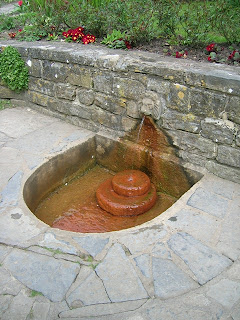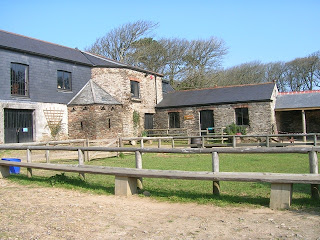Monday, April 23, 2007
Glastonbury 09.04.2007
Sunday, April 22, 2007
Newquay, Tintagel 08.04.2007
Cider Testing!
Part of the Cider Farm
Some of the Farm Animals on display for the kids
Newquay is one of the big surf spots in the southwest, and hence over the Easter weekend it was pretty busy. We drove through the town and it felt a lot like Voctor Harbour with the surfing culture and a generally young population walking about the streets. Being as there was not too many places to park, we grabbed a Cornish Pasty (as we were in Cornwall) then drove on to Tinagel.
Tintagel
Tintagel is famously known as the birthplace of King Arthur, although an ‘Arthur’ may never have come to Tintagel, however Tintagel was at the time the stronghold of the Kings of Cornwall.
Tintagel Old Post Office
We walked right past the old post office without even realising it the first time! It is a National Heritage Property hence our Aussie Membership provided free entry to this site. The old post office is over 600 years old and is a traditional Cornish Longhouse. It is situated on the main street of Tintagel nestled amongst the tourist shops and pubs. The rear garden is very well restored and is a great feeling ‘enchanting cottage garden’. The old Victorian style post office is now only there for display, and you can walk through the building along narrow corridors and up unusual spiral staircases and some almost vertical steps to get into loft areas. The roof comprises nailed thin tiles and the roof does not lineup straight, as it sways in and out along the roof line. It really was a great feeling little building with lots of character. The furnishings inside were generally from the 16th Century.
Old Post Office
Note the Roof curving in - looks like it is going to collapse!
Cottage Garden
Tintagel Castle
The Tintagel Castle was built around 1233, and is located on an outcrop of land that would have been defended easily if ever attacked. Only partial remains of the Castle still stand, and most of the buildings are long gone. Footprints of some of the associated buildings are still visible by the low walls still in place, including much of the Chapel floor plan and praying rooms. The Castle itself can be more likened to two large courtyard buildings, one located high upon the mainland. With the island courtyard being the only entrance to the small island of land it protects.
As far as Castles go it had great views of the surrounding coast, but I am not sure calling it a Castle does some of the other Castles we have seen justice. The artists reconstruction of what could have been here 800 years ago certainly made for interesting viewing.
Walk down to the Castle Site
Some of the remaining walls in ruin
Walking past the Island Courtyard
The old Chapel
Mainland Courtyard
Views over the Coast
The only entry to the Island Courtyard
The narrow steps up to the Castle were the only way up and made defending the Castle easy.
After enjoying some more local bakery delights in Tintagel, we headed back home in preparation for the next day in Glastonbury.
Wednesday, April 18, 2007
Eden Project 07.04.2007
We picked up the hire car early on Saturday and first completed some food shopping and stocking up on the beer! This is a lot easier when you have a car, compared to walking with a carton for fifteen minutes, as I have done before.
The Eden project was first on our list of things to see this weekend, and after a 3 hour drive we arrived at the site. The Eden project is the result of an old open cut mine that has been revamped to show what can be done to revegetate barron land, and to educate people on other climates and plants. It contains walk-in biomes, which one contains tropical plants and the other contains Mediterranean type plants.
Outside of the biomes, are numerous walking paths meandering around the valley showcasing local and imported species of plants to see. As it is Spring in England, most of the flowers were in bloom and there were great colours on show.
From the website:
‘The Biome conservatories containing plants from the rainforests and the warm temperate regions of the earth... What's it all about. A green theme park? Eden is about connecting plants, people and places.’
More can be found at:
http://www.edenproject.com/index.html
A Bio-fuelled Model T Ford
Inside the Tropical Biome - An Eco Surfboard.
Balsa wood is used for the core of the board and is grown within the Biome. The baord is wrapped in hemp cloth and plant based resin, with the logo printed onto the hemp using natural dyes. This board (unlike firbreglass ones) can be composted at the end of its life.
Tropical Waterfalls
Warmer climate Biome
After enjoying the afternoon at the Eden Project we drove north towards Newquay, and found a room for the night at one of the local Pubs, the Peterville Inn.




























































